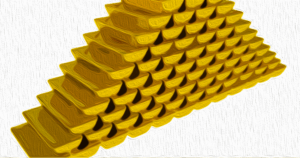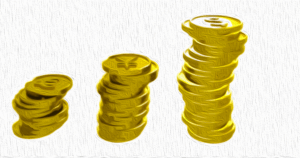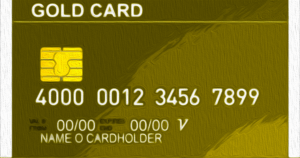
Vanguard's Strong Stance Against Cryptocurrency
Investing giant Vanguard has reaffirmed its opposition to cryptocurrencies and bitcoin by blocking investors from accessing spot bitcoin exchange-traded funds (ETFs) recently approved by the U.S. Securities and Exchange Commission (SEC). Additionally, Vanguard has announced that it will no longer allow the purchase of cryptocurrency products, including bitcoin futures ETFs. This decision has drawn criticism, with Ark Invest CEO Cathie Wood describing it as a "terrible mistake" and "a strategic blunder."
No Access to Spot Bitcoin ETFs
Vanguard's new policy prohibits customers from trading the recently approved spot bitcoin ETFs. When customers discovered they could not trade these ETFs, Vanguard clarified its position, stating that spot bitcoin ETFs will not be available for purchase on its platform. Furthermore, Vanguard has no plans to offer Vanguard bitcoin ETFs or other crypto-related products. The company believes that these products do not align with its focus on asset classes such as equities, bonds, and cash, which are considered the foundational elements of a well-balanced, long-term investment portfolio.
Ark Invest CEO's Critique
Ark Invest CEO Cathie Wood criticized Vanguard's decision to deny customers access to spot bitcoin ETFs. Wood referred to the move as a "terrible decision" and "a strategic blunder." She believes that Vanguard is underestimating the potential of new financial rails and the transformative impact of bitcoin and blockchain technology in reducing friction within the financial system. Wood emphasized the importance of innovation and expressed confidence in the ability of bitcoin and blockchain technology to address the current inefficiencies in the financial industry. She also highlighted that by blocking access to spot bitcoin ETFs, Vanguard is depriving its investors of the opportunity to participate in a groundbreaking decentralized monetary system.
The Implications of Vanguard's Stance
Vanguard's decision to double down on its anti-bitcoin and anti-crypto stance has raised questions about its long-term strategy and its willingness to adapt to the evolving digital landscape. While Vanguard aims to focus on offering a core set of products and services aligned with the needs of long-term investors, critics argue that the company may be missing out on the potential benefits of embracing cryptocurrencies. The growing popularity of bitcoin and the increasing institutional interest indicate that cryptocurrencies are becoming an integral part of the global financial ecosystem.
Share Your Thoughts
What are your thoughts on Vanguard's decision to block access to spot bitcoin ETFs and its anti-bitcoin and anti-crypto stance? Let us know in the comments section below.
Frequently Asked Questions
Can I buy Gold with my Self-Directed IRA?
Your self-directed IRA can be used to purchase gold, but first you need to open an account with a brokerage firm such as TD Ameritrade. Transfer funds from an existing retirement account are also possible.
The IRS allows individuals up to $5.500 annually ($6,500 if you are married and filing jointly). This can be contributed to a traditional IRA. Individuals can contribute up $1,000 per annum ($2,000 if they are married and jointly) directly to a Roth IRA.
If you do decide you want to invest your money in gold, you should look into purchasing physical bullion instead of futures contracts. Futures contract are financial instruments that depend on the gold price. These financial instruments allow you to speculate about future prices without actually owning the metal. Physical bullion, however, is real gold and silver bars that you can hold in your hand.
What should I pay into my Roth IRA
Roth IRAs allow you to deposit your money tax-free. These accounts are not allowed to be withdrawn before the age of 59 1/2. There are some rules that you need to keep in mind if you want to withdraw funds from these accounts before you reach 59 1/2. First, your principal (the original deposit amount) cannot be touched. You cannot withdraw more than the original amount you contributed. You must pay taxes on the difference if you want to take out more than what you initially contributed.
The second rule is that your earnings cannot be withheld without income tax. Also, taxes will be due on any earnings you take. Let's suppose that you contribute $5,000 annually to your Roth IRA. Let's further assume you earn $10,000 annually after contributing. The federal income tax on your earnings would amount to $3,500. So you would only have $6,500 left. You can only take out what you originally contributed.
The $4,000 you take out of your earnings would be subject to taxes. You'd still owe $1,500 in taxes. Additionally, half of your earnings would be lost because they will be taxed at 50% (half the 40%). So, even though you ended up with $7,000 in your Roth IRA, you only got back $4,000.
There are two types if Roth IRAs: Roth and Traditional. A traditional IRA allows for you to deduct pretax contributions of your taxable income. Your traditional IRA allows you to withdraw your entire contribution plus any interest. A traditional IRA can be withdrawn up to the maximum amount allowed.
Roth IRAs won't let you deduct your contributions. Once you are retired, however, you may withdraw all of your contributions plus accrued interest. There is no minimum withdrawal amount, unlike traditional IRAs. Your contribution can be withdrawn at any age, not just when you reach 70 1/2.
Who has the gold in a IRA gold?
The IRS considers gold owned by an individual to be “a type of money” and is subject taxation.
This tax-free status is only available to those who have owned at least $10,000 of gold and have kept it for at minimum five years.
Owning gold can also help protect against inflation and price volatility, but it doesn't make sense to hold gold if you're not going to use it.
If you are planning to sell your gold someday, it is necessary that you report its value. This can affect the capital gains taxes that you owe when cashing in on investments.
It is a good idea to consult an accountant or financial planner to learn more about your options.
How can you withdraw from an IRA of Precious Metals?
You first need to decide if you want to withdraw money from an IRA account. Make sure you have enough cash in your account to cover any fees, penalties, or charges that may be associated with withdrawing money from an IRA.
If you are willing to pay a penalty for early withdrawal, you should consider opening a taxable brokerage account instead of an IRA. This option will require you to pay taxes on the amount that you withdraw.
Next, figure out how much money will be taken out of your IRA. This calculation is affected by many factors, such as the age at which you withdraw the money, the amount of time the account has been owned, and whether your plans to continue contributing to your retirement fund.
Once you determine the percentage of your total saved money you want to convert into cash, then you need to choose which type IRA you will use. Traditional IRAs allow for you to withdraw funds without tax when you turn 59 1/2. Roth IRAs, on the other hand, charge income taxes upfront but you can access your earnings later and pay no additional taxes.
Once the calculations have been completed, it's time to open a brokerage accounts. Many brokers offer signup bonuses or other promotions to encourage people to open accounts. You can save money by opening an account with a debit card instead of a credit card to avoid paying unnecessary fees.
When it's time to make withdrawals from your precious-metal IRA, you'll need a place to keep your coins safe. Some storage facilities will take bullion bars while others require you only to purchase individual coins. You'll have to weigh the pros of each option before you make a decision.
Bullion bars are easier to store than individual coins. But, each coin must be counted separately. You can track their value by keeping individual coins.
Some people prefer to keep their coins in a vault. Others prefer to store their coins in a vault. Whichever method you choose, make sure you store your bullion safely so you can enjoy its benefits for years to come.
What are the fees for an IRA that holds gold?
A monthly fee of $6 for an Individual Retirement Account is charged. This fee covers account maintenance fees, as well any investment costs that may be associated with your investments.
If you wish to diversify your portfolio, you may need to pay additional fees. These fees will vary depending upon the type of IRA chosen. Some companies offer free checking accounts, but charge monthly fees to open IRA accounts.
Most providers also charge an annual management fee. These fees are usually between 0% and 1%. The average rate is.25% per year. These rates are often waived if a broker like TD Ameritrade is used.
What are the benefits of a Gold IRA?
You can save money on retirement by putting your money into an Individual Retirement Account. It is tax-deferred until it's withdrawn. You can decide how much money you withdraw each year. There are many types to choose from when it comes to IRAs. Some are better suited for people who want to save for college expenses. Others are designed for investors looking for higher returns. Roth IRAs are a way for individuals to make contributions after the age of 59 1/2, and then pay taxes on any earnings upon retirement. The earnings earned after they withdraw the funds aren't subject to any tax. This account is a good option if you plan to retire early.
A gold IRA is similar to other IRAs because it allows you to invest money in various asset classes. Unlike a regular IRA that requires you to pay taxes on the gains you make while you wait to access them, a gold IRA does not have to do this. This makes gold IRA accounts excellent options for people who prefer to keep their money invested instead of spending it.
An additional benefit to owning gold through an IRA, is the ease of automatic withdrawals. This means that you don't need to worry about making monthly deposits. To make sure you don't miss any payments, you can also set up direct deductions.
Finally, gold remains one of the best investment options today. Because it's not tied to any particular country, its value tends to remain steady. Even during economic turmoil, gold prices tend to stay relatively stable. Gold is a good option for protecting your savings from inflation.
How much should precious metals be included in your portfolio?
To answer this question we need to first define precious metals. Precious metals are those elements that have an extremely high value relative to other commodities. This makes them valuable in investment and trading. The most traded precious metal is gold.
But, there are other types of precious metals available, including platinum and silver. The price of gold fluctuates, but it generally remains stable during times of economic turmoil. It is also not affected by inflation and depression.
In general, prices for precious metals tend increase with the overall marketplace. They do not always move in the same direction. For instance, gold's price will rise when the economy is weak, while precious metals prices will fall. Investors expect lower interest rate, making bonds less appealing investments.
The opposite effect happens when the economy is strong. Investors prefer safe assets such as Treasury Bonds and demand fewer precious metals. Because they are rare, they become more pricey and lose value.
It is important to diversify your portfolio across precious metals in order to maximize your profit from precious metals investments. Additionally, since the prices of precious metals tend to rise and fall together, it's best to invest in several different types of precious metals rather than just focusing on one type.
Statistics
- You can only purchase gold bars at least 99.5% purity. (forbes.com)
- Indeed, several financial advisers interviewed for this article suggest you invest 5 to 15 percent of your portfolio in gold, just in case. (aarp.org)
- This is a 15% margin that has shown no stable direction of growth but fluctuates seemingly at random. (smartasset.com)
- Contribution limits$6,000 (49 and under) $7,000 (50 and up)$6,000 (49 and under) $7,000 (50 and up)$58,000 or 25% of your annual compensation (whichever is smaller) (lendedu.com)
- Instead, the economy improved, stocks rebounded, and gold plunged, losing 28 percent of its value in 2013. (aarp.org)














